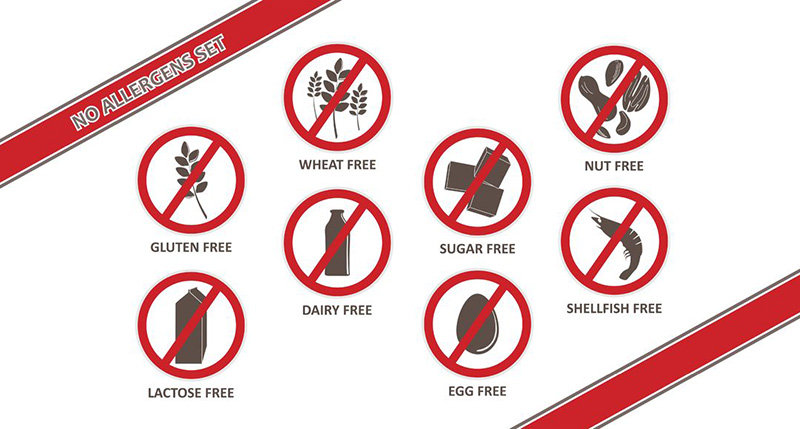The Spring pollen season is almost over, so hopefully the temporary misery of seasonal allergies will soon come to an end (read our recent blog to learn how to combat them naturally). However, there’s another potential allergen lurking under your nose: food allergies can cause systemic inflammation and increase your risk for a number of serious health disorders.
A food allergy is an overreaction by the body’s immune system to a specific protein in a food. Symptoms can include digestive issues, bloating, sneezing, and skin flare-ups including hives, rash, eczema or redness of the skin around the eyes. If you think you have a food allergy but can’t pinpoint the cause, an elimination diet could help.
An elimination diet is a short-term program – think of it as your own personal scientific experiment – that eliminates specific potential foods that are known to cause allergies and other negative reactions. After about three weeks, you slowly reintroduce each suspect food individually and gradually while taking good notes on your reaction to it, to identify which foods you might have an intolerance or sensitivity to.
If you’re experiencing ongoing symptoms but can’t figure out what’s causing them, an elimination diet could help to pinpoint the culprit.
Which Foods Should I Eliminate?
There are eight common food groups blamed for about 90 percent of all food allergies, intolerances and sensitivities. During an elimination diet, you should avoid these foods:
- Dairy
- Gluten/wheat
- Soy
- Peanuts
- Nuts
- Fish
- Shellfish
- Eggs
In addition, because the following foods can also cause irritation, it’s a good idea to stop eating them during the course of your elimination diet:
- Refined/added sugar (also, any artificial sweeteners)
- Corn
- Alcohol
- Caffeine
- Packaged, processed or fast foods
How Long Does an Elimination Diet Last?
The short answer is about 3-6 weeks. You’re probably thinking, “But what will I eat!?” and you’re right: an elimination diet dramatically narrows your food choices, but it’s temporary and for a great reason. The internet is your source for great recipes. The good news is that you don’t have to stop eating all of those foods forever, just long enough to let your immune system’s antibodies (which are triggered by food sensitivities) dissipate. That takes about three weeks, and by then you will feel notably better if you do have food allergies or sensitivities.
At the three-week point, it’s time to start adding foods back into your diet one at a time. Have a scrambled egg for breakfast, for example, and keep a food journal to note any symptoms you experience. If you sneeze, your eyes itch, your heart races or you experience other symptoms after eating a specific food, that could indicate a food allergy or sensitivity. Go slowly when reintroducing foods, with a day or two between each reintroduction, so that you can pinpoint exactly which foods cause noticeable reactions.
What are the Benefits?
By making an effort to identify food sensitivities, intolerances and allergies, you’ll gain the tools to significantly improve your health. When you eat food that your body can’t tolerate, it triggers the immune system and puts your body in a constant state of inflammation. That type of chronic systemic inflammation is why food allergies are associated with an increased risk of serious health disorders including asthma, chronic fatigue, autoimmune disorders, mood disorders, learning disabilities including ADHD, as well as arthritis, insomnia, joint pain and migraine headaches.
Eliminating foods that tax your body’s systems can result in weight loss, increased nutrient uptake, a reduction of IBS and other digestive symptoms, fewer headaches and migraines, relief from skin irritations and an overall feeling of well-being. Are you ready to start your elimination diet?

